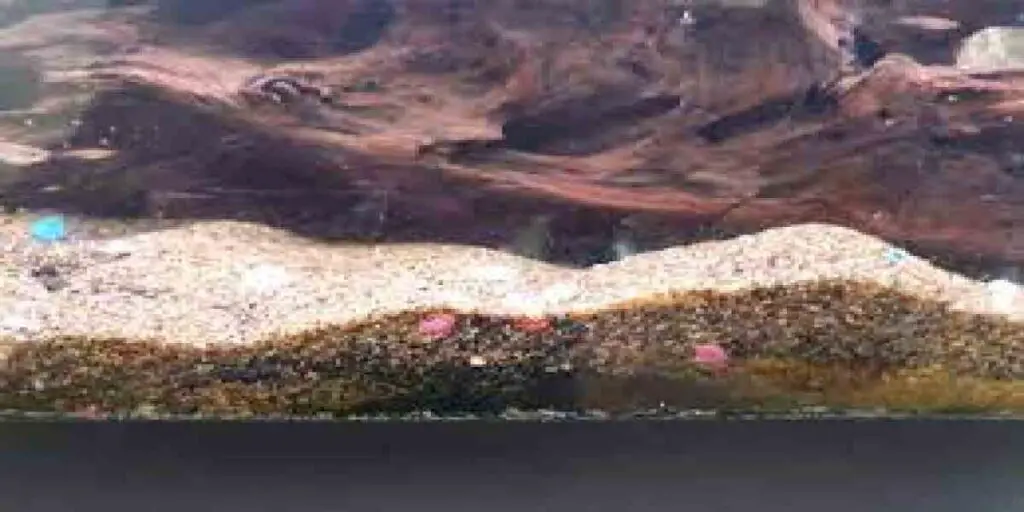Why is your aquarium sand turning black and how to prevent it. Get expert tips for maintaining a clean and healthy aquatic environment in your fish tank.

Aquarium sand is a common substrate used in fish tanks and aquatic setups. It not only enhances the aesthetics of your aquarium but also provides a functional base for plants and aquatic life. However, one common issue that aquarists face is the unsightly phenomenon of aquarium sand turning black. In this comprehensive guide, we’ll delve into the causes of this issue, how to prevent it, and the best methods for cleaning blackened aquarium sand.
Types of Aquarium Sand
Before we dive into the causes and solutions, it’s essential to understand the different types of aquarium sand available:
- Play Sand: Often used in children’s sandboxes, it’s not suitable for aquariums due to its fine texture and potential for compacting.
- Marine Sand: Ideal for saltwater tanks, marine sand mimics natural ocean substrates and supports beneficial organisms.
- Silica Sand: Commonly used for freshwater aquariums, it’s inert and won’t affect water chemistry.
- Aragonite Sand: Best for maintaining stable pH levels in marine and reef tanks.
- Coral Sand: Primarily used in marine tanks, it provides essential calcium and alkalinity for coral growth.
Causes of Black Sand in Aquariums
- Hydrogen Sulfide Gas: The most notorious culprit behind blackened sand is hydrogen sulfide (H2S) gas. This gas can accumulate in the substrate when organic matter decays without proper oxygen circulation.
- Cyanoalgae: Cyanobacteria, also known as “red slime” or “blue-green algae,” can thrive in low-oxygen environments, leading to black patches on the sand.
- Detritus: Uneaten fish food, waste, and decaying plant matter can settle in the substrate, creating an anaerobic environment conducive to black sand formation.
- Iron Bacteria: These microorganisms consume iron in the substrate and produce black deposits, often seen as dark spots on the sand.
How to Prevent Black Sand Formation
Preventing black sand in your aquarium starts with good practices and careful maintenance:
- Maintain Good Water Quality:
- Regularly test and monitor water parameters such as pH, ammonia, nitrites, and nitrates.
- Ensure proper filtration to maintain oxygen levels and remove organic waste.
- Regular Aquarium Cleaning:
- Perform routine water changes to remove excess nutrients and detritus.
- Use a gravel vacuum to clean the substrate during water changes.
- Choosing the Right Aquarium Sand:
- Select an appropriate substrate for your specific aquarium setup, considering the type of fish and plants you have.
- Avoid fine sands that can compact and trap debris.
- Avoiding Overfeeding:
- Feed your fish an amount they can consume within a few minutes to reduce excess waste.
- Remove any uneaten food promptly to prevent it from sinking into the substrate.
How to Clean Black Sand in Your Aquarium
If you’ve already encountered black sand in your aquarium, there are steps you can take to address the issue:
- Vacuuming the Sand:
- Use a gravel vacuum during water changes to remove detritus and debris from the sand.
- Be cautious not to disturb your plants or disturb the substrate too vigorously.
- Using a Gravel Cleaner:
- Gravel cleaners with a tube and siphon can efficiently remove waste and debris without disrupting the sand.
- Target areas with visible black spots or discolored sand.
- Rinsing Aquarium Sand:
- In extreme cases, you may need to rinse the sand outside the tank.
- Rinse it thoroughly with clean, dechlorinated water to remove accumulated debris.
- Replacing Heavily Soiled Sand:
- If the sand is too heavily soiled or contaminated, consider replacing it entirely.
- Ensure the new sand is properly rinsed and prepared before adding it to the aquarium
You May Also Like:
- How To Tell If Ghost Shrimp Eggs Are Fertilized
- Black Spot Disease Betta: Essential Tips For Fishkeepers
- Betta Black Spot Disease: Proven Methods For Recovery
Conclusion
In summary, black aquarium sand can be a visually unappealing and potentially harmful issue in your aquarium. However, with proper prevention and regular maintenance, you can keep your substrate clean and your aquatic ecosystem thriving.
Remember that maintaining good water quality, regular cleaning, and selecting the right type of sand are key factors in preventing black sand formation. In case the issue arises, the methods for cleaning black sand can help restore the beauty and health of your aquarium.
